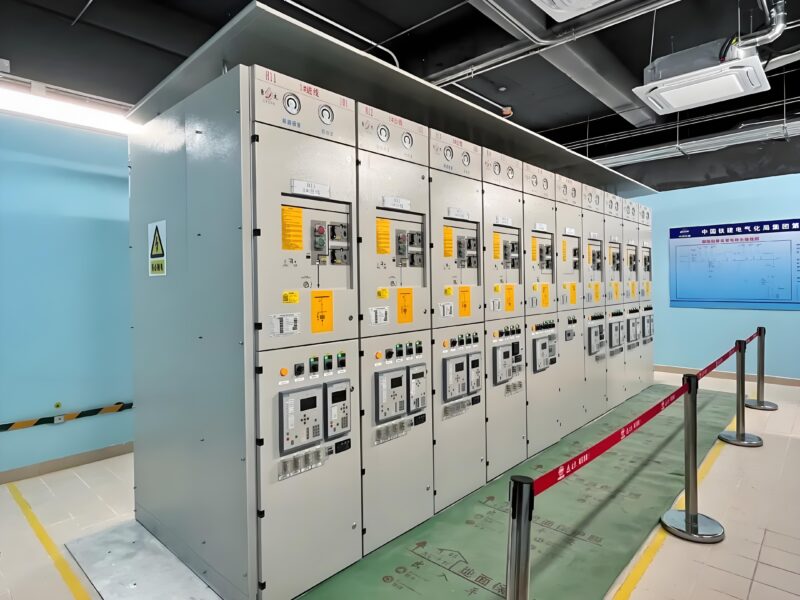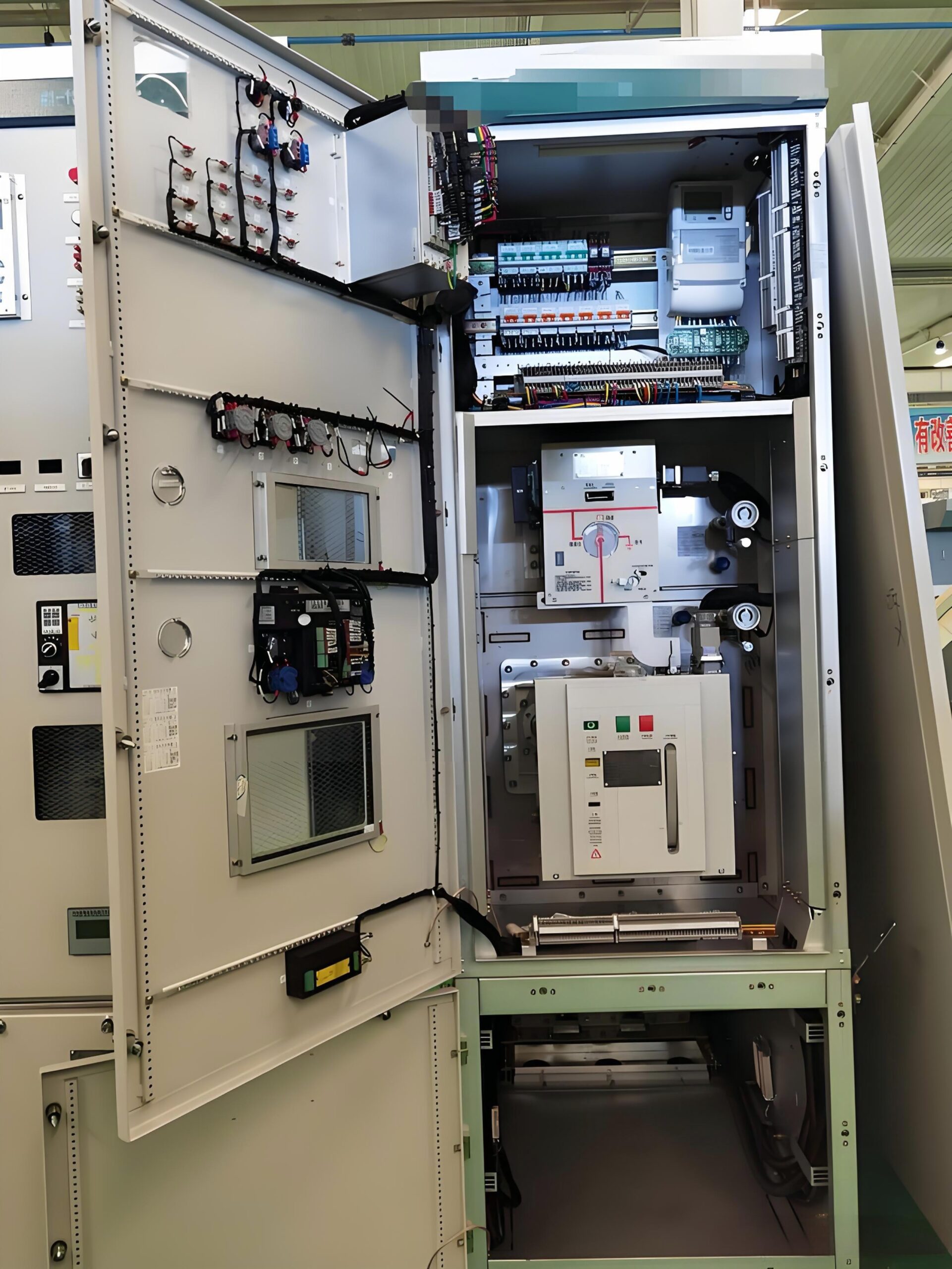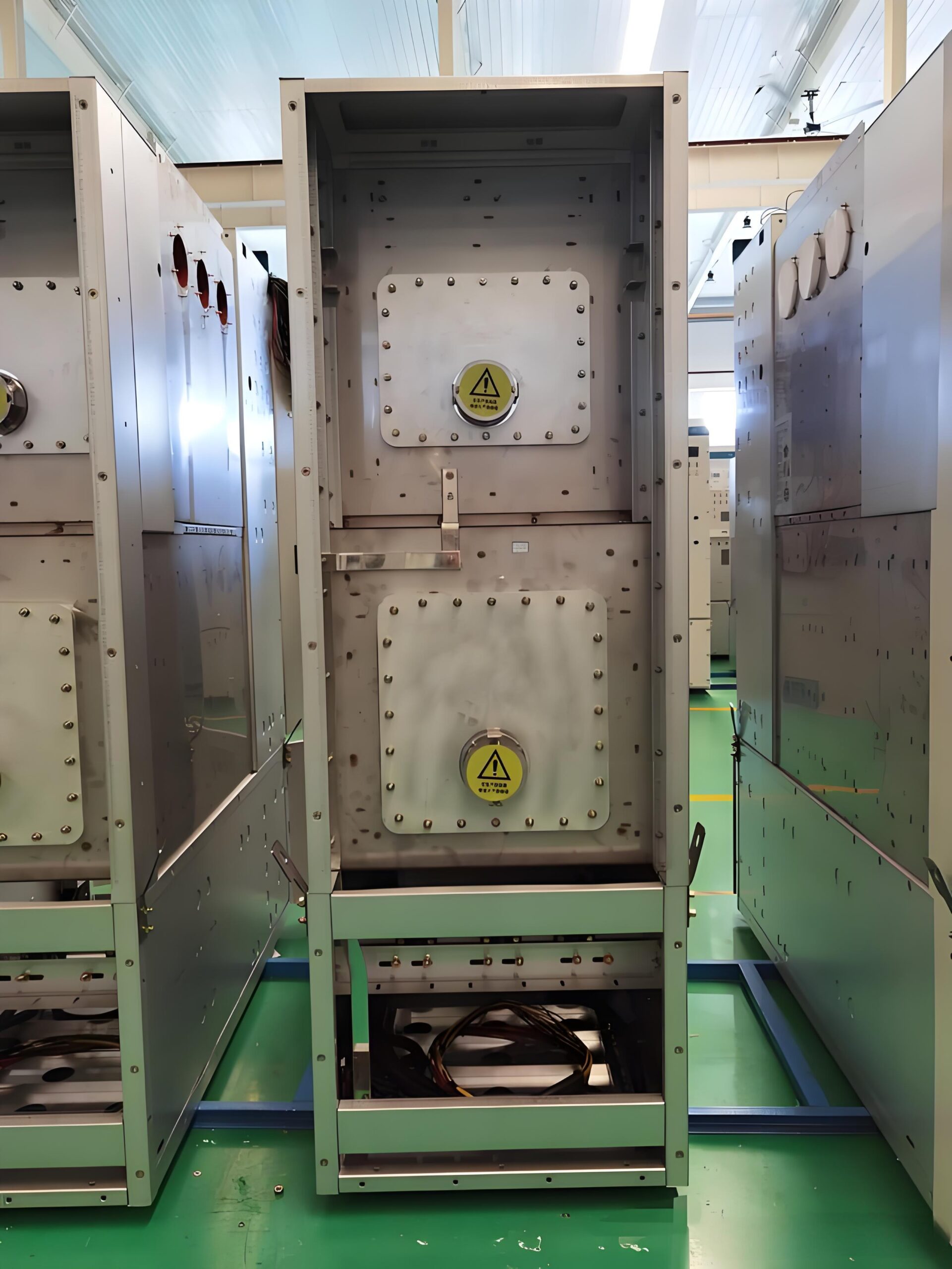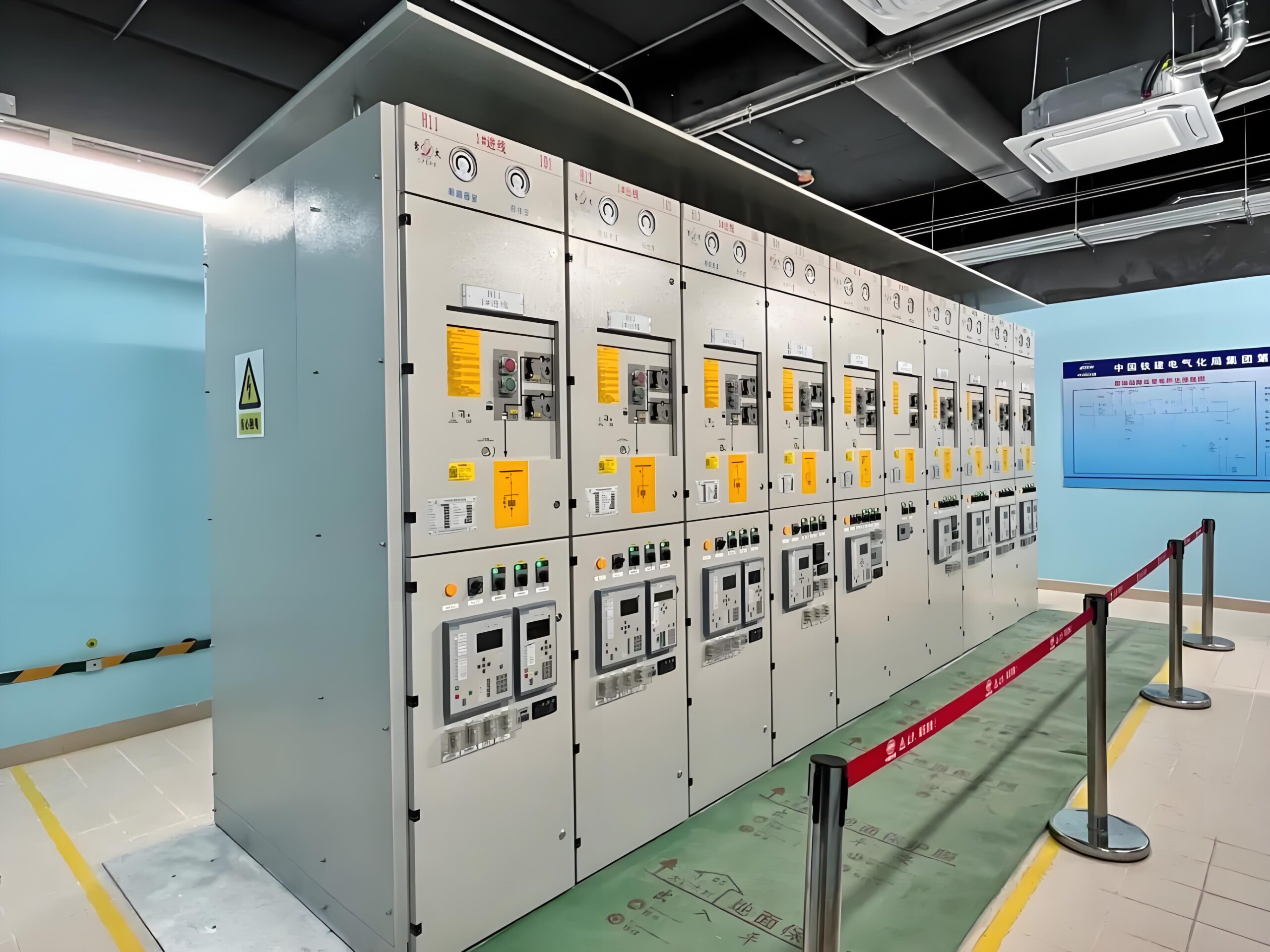
Working Principle and Components of Gas Insulated Switchgear (GIS)
Gas Insulated Switchgear (GIS) is a high-voltage switchgear that uses gases such as sulfur hexafluoride (SF6) for insulation and arc extinction. With characteristics such as compactness, reliability, and low maintenance costs, GIS is widely used in high-voltage and ultra-high-voltage power systems. It consists of metal-enclosed compartments containing key components such as circuit breakers, disconnectors, busbars, instrument transformers, earthing switches, and surge arresters. Due to its superior performance, GIS is particularly suitable for space-constrained and high-reliability power supply applications, including urban substations, industrial facilities, rail transit, data centers, and renewable energy power stations.

1. What is Gas Insulated Switchgear?
Gas Insulated Switchgear (GIS) is a metal-enclosed high-voltage switchgear primarily characterized by the use of SF6 gas as the insulating medium between live components and the grounded enclosure. SF6 gas has the following properties:
- High dielectric strength: Several times higher than air, effectively preventing electrical breakdown and enhancing safety.
- Excellent arc extinguishing performance: Quickly extinguishes high-voltage arcs, improving power system stability.
- High thermal stability: Suitable for various environmental conditions, maintaining excellent electrical performance over time.
- Sealed gas insulation structure: Significantly reduces equipment volume and enhances system compactness.
GIS consists of multiple gas-tight compartments, each containing components enclosed within a metal shell filled with SF6 gas, separated by gas-tight barriers. To ensure gas pressure and quality, GIS is equipped with a gas monitoring system for real-time leak detection.

2. Main Components and Functions of GIS
2.1 Circuit Breaker
The circuit breaker is one of the core components of GIS, capable of quickly disconnecting the circuit in the event of a fault to prevent further current flow. GIS circuit breakers typically use SF6 as the arc-extinguishing medium, operating as follows:
- Under normal conditions, the breaker contacts are closed, allowing current to flow.
- In the event of a short circuit or overload, the contacts separate, generating an arc.
- SF6 gas rapidly absorbs arc energy, extinguishing it and protecting the power grid.
2.2 Disconnector
Disconnectors are used to isolate a portion of the circuit from the rest of the system during maintenance or testing. Features of GIS disconnectors include:
- SF6 insulation ensures a safe isolation environment.
- Can be operated manually or remotely for flexibility.
2.3 Busbar
Busbars are key conductors in the power system. GIS busbars are typically arranged in a three-phase configuration and insulated with SF6 gas. Their functions include:
- Connecting generators, transformers, and feeders for power transmission.
- Enhancing system reliability and reducing energy losses.
2.4 Instrument Transformer
Instrument transformers measure voltage and current and provide signals for protection devices. The main types include:
- Current Transformer (CT): Monitors line current and provides signals for relay protection.
- Voltage Transformer (PT): Measures voltage and supplies data for grid control.
2.5 Earthing Switch
The earthing switch connects part of the circuit to the ground during maintenance to ensure personnel and equipment safety. Features include:
- SF6 insulation for enhanced reliability.
- Manual or remote operation for improved safety.
2.6 Surge Arrester
Surge arresters protect GIS from overvoltage caused by lightning or switching operations. GIS uses metal oxide surge arresters (MOV), which feature:
- Fast response, suppressing overvoltage within milliseconds.
- Low maintenance costs and long lifespan.
-

Medium Voltage GIS
3. Working Principle of GIS
GIS primarily operates by leveraging the excellent insulation and arc-extinguishing properties of SF6 gas. The core mechanisms include:
3.1 Thermal Interruption Mechanism
- When an arc forms, SF6 gas absorbs heat and cools the arc.
- As the arc temperature decreases, its resistance increases, reducing the current.
- At the natural current zero point, the arc extinguishes.
3.2 Dielectric Interruption Mechanism
- After the breaker opens, SF6 gas flows into the arc zone.
- The gas quickly absorbs free electrons, forming non-conductive neutral molecules.
- Dielectric strength recovers rapidly, preventing arc reignition.
These properties enable GIS to extinguish arcs swiftly, enhancing power system safety and stability.

4. Advantages and Disadvantages of GIS
4.1 Advantages
- Compact size: Ideal for space-constrained substations and industrial facilities.
- High reliability: The metal-enclosed structure minimizes environmental impacts, while gas insulation enhances safety.
- Low maintenance costs: The SF6 insulation system reduces cleaning and maintenance requirements.
- Strong environmental adaptability: Operates stably in humid, high-altitude, and salt-fog environments.
4.2 Disadvantages
- High cost: GIS equipment is more expensive than Air Insulated Switchgear (AIS).
- Strict gas management requirements: SF6 gas leaks can impact the environment, requiring monitoring and recovery systems.
- Complex structure: Maintenance and repairs require professional personnel and precision installation techniques.
5. Development of GIS in Smart Grids
With the advancement of smart grids, GIS is evolving towards more environmentally friendly and intelligent designs. Key trends include:
- SF6-free alternatives: Research on eco-friendly insulation gases such as C5F10O and N2/SF6 gas mixtures.
- Digital monitoring systems: GIS equipped with smart sensors and remote monitoring to enhance operational efficiency.
- Modular design: Increasing flexibility to adapt to different applications.
6. Conclusion
Gas Insulated Switchgear (GIS) is widely used in modern power systems due to its high reliability, compact design, and low maintenance costs. Despite its higher cost, advancements in intelligent and eco-friendly technologies will expand GIS applications in future power grids, ensuring sustainable development in the electrical industry.
